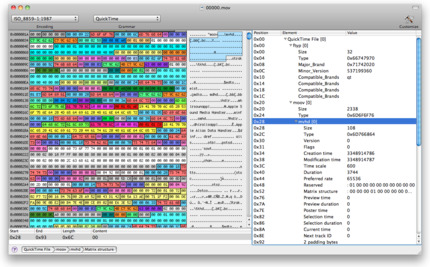
Rounding out this week with another tool review for the Mac under OS X. Earlier this week, we reviewed our favorite disassembler, Hopper for OS X. Synalyze It! Pro is another invaluable tool that we depend on. This tool is a hex editor with some very very useful features in the GUI. Namely, it lets you “lasso” different bits of text and highlight them in different colors. While this might sound basic, it is amazingly useful for performing reverse engineering of protocols and other deep-level analysis tasks of textual data.
- Grammars for Synalyze It! Contribute to synalysis/Grammars development by creating an account on GitHub.
- Is a free and simple to use Mac OS X app which will allow you to easily edit and analyze binary files of any size. Features enhanced support for many character encodings and it will allow you to interactively define grammars for various file formats.
- It’s been a long time since I have worked with Synalyze It! (and its non-macOS counterpart, Hexinator).In fact, it’s been six years since I last posted on this matter, and back then, the app tended to crash a lot, and my scripting skills were not up to snuff as it relates to some of the more complicated structures that I have been finding, and the feature set for the app was a bit lacking.
Recently, we have been doing quite a bit of protocol testing in the lab and this tool has proven itself again and again as invaluable. My favorite feature of the tool is available by highlighting some piece of data and right clicking to bring up a menu, then selecting “compare code pages”. This brings up a window in which the highlighted data is run through a bunch of encoding/decoding schemes and presented to you both as ASCII and as hex. This makes reversing simple encoding on text as easy pie and as quick as swatting a fly. In my recent protocol work, this was a feature I used over and over again to identify various components of the data stream and figure out how each was encoded as a part of a bigger puzzle.
Another feature we have come to love is the “Show Checksums” feature. This feature displays a wide variety of checksums for the data that is highlighted and updates the checksums in realtime. This makes it pretty easy to figure out if different fields are included in the protocol’s checksum activities and leads to faster, cleaner reversing. However, I do have a couple of things I would like to see as future features for this capability. For one, I would like to see additional checksum mechanisms added and perhaps even an interface for creating your checksum scripts or equations. Additionally, I would really like it if you could get realtime updates, but with a mechanism for selecting multiple data elements and not just single strings. I really thought this would work, but could not seem to selections to “stick” so that I could add multiples.
The real power of the tool is in the creation of the “grammar files”. This is an easy to use, intuitive and powerful mechanism for reversing. I still need to practice a bit more with the grammar definition mechanisms, but I can see where this will grow the product’s usefulness rapidly. The grammar definition could lend itself to a better toolbox in the GUI. It might be easier for beginners to learn to master this capability if an set of quick and easy tools were easily available without a bunch of menu navigation. However, the feature is still excellent and the tool remains a very powerful addition to our toolbox.
Hexinator
Grammar Files: Volume Header Grammar; Catalog File Grammar; Attribute File Grammar; Synalyze It! Is a very powerful hex editor that a user can create or use grammars to view certain data structures. An example of the Volume Header grammar is show below.
The link to the App Store has a variety of screenshots of the product if you want to check it out. The product retails for $25 in the App Store and a non-Pro version is available for $5 – however, note that it lacks many features of the Pro version that make it such a useful tool. Serato air horn sample download.
Synalyze It Pro
PS – MSI has no affiliation or relationship with the product and/or the developers.
